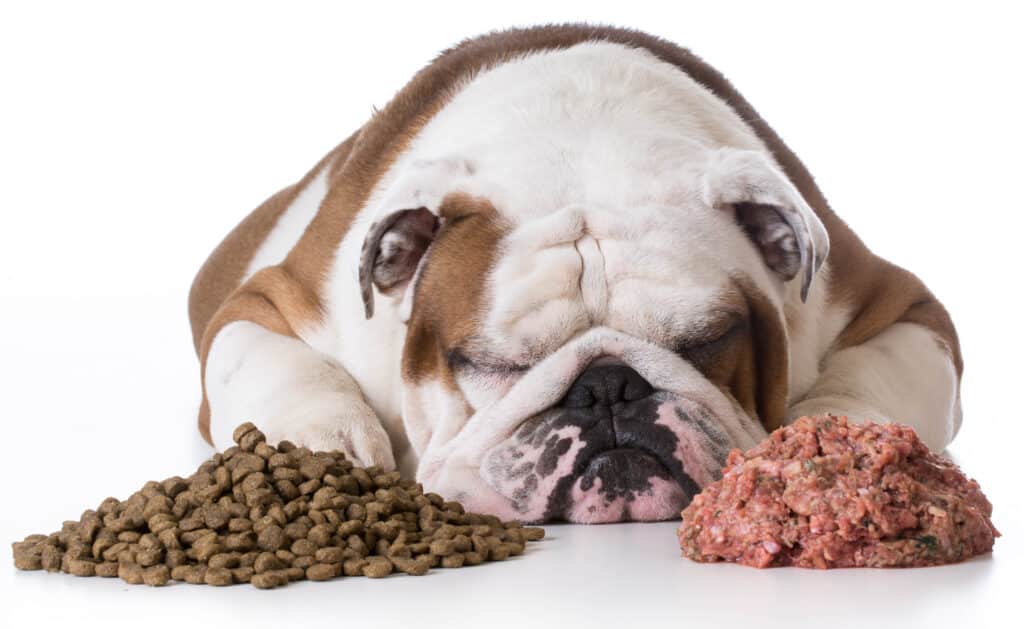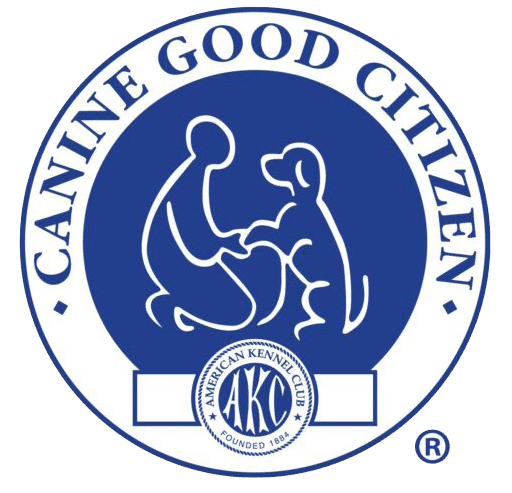
As a responsible pet owner, providing your furry friend with the best nutrition is essential to ensure their overall health and well-being. One of the most controversial debates in the pet food industry is whether raw dog food or kibble is better for your canine companion.
Raw dog food is a diet that consists of uncooked meat, organs, and bones, while kibble dog food is a dry dog food made from processed ingredients. Both diets have pros and cons, and deciding which one to feed your dog depends on various factors, including age, health, and personal preferences.
In this article, we’ll explore the differences between raw dog food and kibble to help you decide which diet is best for your furry friend.
Raw Dog Food/ Raw Diet
Raw dog food, also known as a BARF diet, stands for “biologically appropriate raw food.” This diet consists of raw meat, raw eggs, fruits, vegetables, and bones. This diet mimics what a dog would eat in the wild. Proponents of this diet argue that it provides dogs with a complete and balanced nutritional diet.
Advantages of Raw Dog Food Diet
One of the biggest pros of a raw dog food diet is that it is highly digestible. The diet comprises raw meat, closer to a dog’s natural diet. Raw dog food is easier for dogs to digest, making them less likely to have digestive issues like diarrhea or constipation.
Another advantage of raw dog food is that it can lead to a healthier coat and skin. Raw food contains essential nutrients, vitamins, and minerals that promote healthy skin. Many pet owners claim their dog’s coat became shinier and their skin cleared up after switching to a raw dog food diet.
Disadvantages of Raw Dog Food
Despite its benefits, there are some disadvantages to a raw dog food diet. One of the most biggest drawbacks is that the diet can be expensive. Raw dog food is often more costly than traditional kibble, which can be a limiting factor for many pet owners.
Another disadvantage of raw dog food is that it can be time-consuming to prepare. Raw dog food requires preparation and careful handling to ensure it is safe. You may need to buy special storage and handling equipment to keep your dog’s food fresh and safe to consume.
Kibble
Kibble is the most common diet for dogs. This diet consists of processed and dry dog food formulated to be complete and balanced. Kibble is usually made up of animal byproducts, grains, and vegetables.
Advantages of Kibble
One of the biggest advantages of kibble is its easy storage and transport. Kibble is a convenient option for busy pet owners that don’t have the energy or time to prepare a raw food diet. Kibble is also more affordable than raw food and can be found at most pet and grocery stores.
Another advantage of kibble is that it is convenient for measuring portions and used as a treat for dog training. Kibble comes with feeding instructions on the package, making it easy to ensure your dog gets the right amount of food.
Disadvantages of Kibble
One of the biggest disadvantages of kibble is its high carbohydrate intake. Kibble is often made up of grains and other carbohydrates, which can contribute to dog weight gain. High-carbohydrate diets can also lead to other health issues like diabetes and digestive problems.
Another disadvantage of kibble is that it can be less palatable than raw dog food. Dogs can become bored with kibble and may start to refuse it. This can lead to under-eating and malnutrition.
Nutritional Content in Raw Dog Food and Kibble
Raw dog or feeding raw) food is a diet that consists of uncooked meat, bones, and organs, along with some vegetables and fruits. The nutritional content of raw dog food can vary widely depending on the recipe. However, most raw dog food diets offer several key benefits to dogs that traditional commercial kibble may not.
Raw dog food is high in protein, which is essential for building and repairing muscle tissue. It also contains raw, unprocessed fats that provide energy and support healthy skin and coat. Unlike kibble and canned dog food, raw dog food is not processed at high temperatures, preserving natural vitamins and enzymes necessary for optimal health.
Most raw dog food meals also include vegetables, which provide vitamins, minerals, and fiber that support digestive health. These vegetables are usually pureed or mashed to make them easier for dogs to digest and absorb.
However, raw dog food can be nutritionally imbalanced in certain areas, such as calcium and phosphorus ratios, leading to skeletal problems if not properly balanced. Therefore, it is essential to always consult with a veterinarian or a pet nutritionist before transitioning to a raw dog food diet.
Raw dog food vs kibble FAQs
Is raw food better than kibble for digestion?
The debate over whether raw food is better than kibble for pets has been ongoing. Some pet owners believe that raw food is more digestible and contains more nutrients, while others argue that kibble is nutritionally complete and easier to store.
Raw food advocates say that feeding pets a diet of uncooked meat, bones, and organs is more natural and closer to what they would eat in the wild. They argue that muscle meat in raw food is more digestible, which can lead to better digestion and less waste. Raw food also contains enzymes and bacteria that can improve gut health.
On the other hand, kibble is highly processed and often contains fillers and preservatives. However, kibble is nutritionally complete and balanced, which is important for maintaining a healthy pet. Kibble is also more convenient to store and easier to portion.
Ultimately, it comes down to personal preference and what works for your pet. It’s important to consult with a veterinarian and do research on both raw diets and food and kibble before making a decision.
Can you mix raw dog food with kibble?
It is generally not recommended to mix raw dog food with kibble. This is because the two have different digestion rates and processes. Kibble takes longer to digest, while raw food is digested quickly. When mixed with feeding kibble, the raw food may decompose before the kibble is fully digested, leading to stomach upset, nausea, and even diarrhea.
Moreover, mixing raw food with kibble can also increase the chances of a bacterial infection. Raw food often carries harmful bacteria like salmonella, campylobacter, and E. coli. When raw foods are mixed with kibble, these bacteria can contaminate the kibble and cause harm to your pet.
It is best to feed your pet a complete and balanced raw diet or a complete and balanced grain free kibble diet. If you want to add some variety, you can give your pet occasional raw and kibble meals separately but do not mix them. Always consult a veterinarian before making any changes to your pet’s diet.
Switching from dry to raw dog food?
Switching from dry to raw dog food can be a significant change for you and your dog. However, many dog owners swear by the benefits of cooking fresh, raw food for their pets. Raw dog food provides vital nutrients, enzymes, and minerals absent in processed dog and commercial pet food too.
At first, your dog may not like the taste of raw dog food as they are used to the consistency and flavor of kibble. To make the dog’s raw diet transition easier, gradually introduce raw food into their diet a few times a week. Gradually increase the amount of raw food and decrease the amount of dry food over 10 to 14-day days.
Switching to raw dog food may prove costlier than feeding your dog kibble, but consider this: you are providing your pet with high-quality, nutritious, wholesome food that is free of preservatives, additives, and artificial flavors. Your dog may also experience better digestion, a shinier coat, and increased energy levels.
Cost of raw dog food vs kibble?
When it comes to choosing the right kind of food for your beloved pet, the cost is always a factor to consider. If you are weighing the option between raw dog food and kibble, you should know that both have their own share of advantages and disadvantages in terms of cost.
Kibbles are generally cheaper and easier to find in pet stores or supermarkets. Though they might also contain fillers and additives that do not offer nutritional value to your pet, resulting in lower quality of food. Alternatively, raw dog food can be more expensive because it is made from real, fresh and organic ingredients. However, raw dog food is healthier and nutritionally superior to kibble as it is free from preservatives, artificial colors, additives, flavors, and potentially harmful chemicals. Hence, the investment in raw pet food is worth it as it can lead to lower veterinary bills and a healthier life for your pup.
Ultimately, the cost of raw dog food versus kibble depends on the type and quality of the product you choose for your pet. Stick to the best quality and value for money for your pet’s nutrition and overall well-being.
Raw dog food vs kibble key takeaways
There is no one-size-fits-all answer when choosing between raw dog food and kibble. The best choice for your furry friend will depend on their individual needs and your lifestyle. Always consult your veterinarian before making considerable changes to your dog’s diet.
If you have the energy and the time to prepare a raw dog food diet, this could be the best option for your canine friend. Raw dog food can be a great way to make sure your dog gets the sustenance they need to thrive.
If you don’t have the supply or the time to prepare a raw dog food diet, kibble is a convenient and affordable option. However, be sure to choose high-quality kibble that is low in carbohydrates and provides your dog with the necessary nutrients.
Ultimately, the key to a healthy dog is balanced nourishment with complete dog food that meets all its nutritional needs. Whether you choose raw dog food or kibble, find the best option for your dog by taking the time to do your research. Your furry pal will thank you for it.



